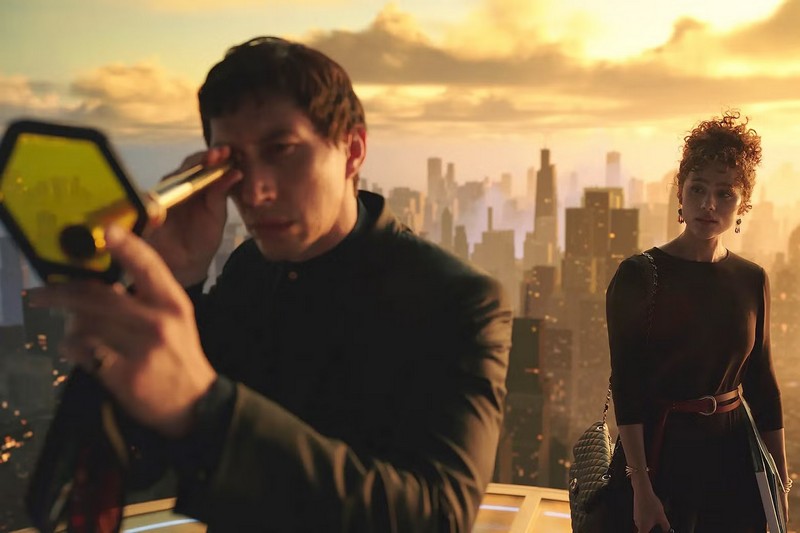Francis Ford Coppola (The Godfather) brings a re-imagined Roman Empire into modern times in his passion project Megalopolis. He proposes that the American Republic is not all that different from old Rome and then asks whether it will fall victim to the appetite for power of a few?

Coppola began developing Megalopolis in the early 1980s, loosely inspired by the Catilinarian Conspiracy of 63 BC. That was an attempt to overthrow the Roman Republic led by popular aristocrat, Lucius Sergius Catilina (known as Catiline). Had Catiline’s coup succeeded, he would have ousted the ruling upper class (including the co-consul Marcus Tullius Cicero) and released the lower classes from debt.
In the case of Megalopolis (cast as a fable), debt among the poor in New Rome (seen as a stylised New York) is rising. It’s a time of financial crisis at the centre of world power. Cesar Catilina (Adam Driver) is a genius and visionary. An architect, designer and scientist, he is chairman of the Design Authority and dreams of a better future for all. He has somehow mastered the art of stopping time.
Cesar is working hard on developing his utopia – to be known as Megalopolis – but faces fierce opposition from (among others) the Mayor, Franklin Cicero (Giancarlo Esposito) who remains committed to the status quo. While not without his faults and foibles, Cesar attracts the interest of the Mayor’s wild socialite daughter, Julia (Nathalie Emmanuel), who becomes his inspiration. Not surprisingly, Franklin Cicero is unhappy about the situation. The Mayor, who tried and failed when he was a DA to prosecute Cesar for the death of his (Cesar’s) wife, isn’t the only one looking to bring him down. The city of New Rome is a veritable viper’s nest.
The seeds for Megalopolis were apparently planted when, as a child, Coppola saw H.G. Wells’ 1936 science fiction epic Things to Come. As writer and director, Coppola has thrown the kitchen sink at the film, introducing a great deal of plotting and subterfuge. But, notwithstanding a series of sub-plots, at its core is the arm-wrestle between the Mayor and Cesar. This also involves a battle for Julia’s affection.
The result is creative, but bloated. And, as far as I’m concerned, it falls prey to a convenient and unrealistic ending. I didn’t buy the character of Cesar, who is essentially painted as a good guy. Nor was I sold on the hold on power of his waning banker uncle Crassus (played by Jon Voigt) – clearly styled on Marcus Licinius Crassus, dubbed “the richest man in Rome”. Even less convincing for me was the Mayor. Julia transitioned a bit too quickly from good time girl to elegant, responsible citizen and muse.
Aubrey Plaza makes the most of her characterisation as greedy mistress Wow Platinum, out to seize as much as she can get. Shia LaBeouf has fun playing the deranged grandson of the banker.
While visually striking, I saw Megalopolis as a hotch potch of ideas, thrown together to form a less-than-convincing whole. Coppola may have dreamed big, but the result is not convincing.
Alex First
Other reviews you might enjoy:
- Gladiator II – movie review
- Belle & Sebastian 3: Friends for Life – movie review
- My Old Ass – movie review

Alex First is the editor of The Blurb. Alex is a Melbourne based journalist and communications specialist. He also contributes to The Blurb on film and theatre.





